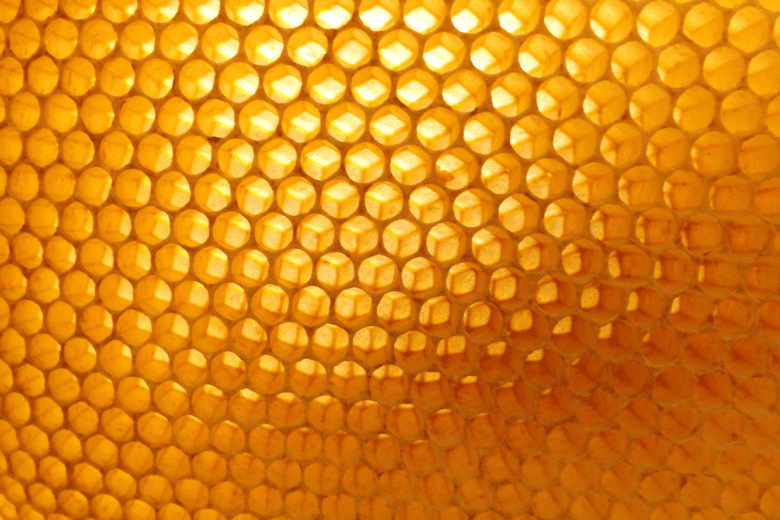Beekeeping, or apiculture, is more than just a hobby; it’s a fascinating practice that has been integral to agriculture and environmental sustainability for thousands of years. As one of the oldest forms of agriculture, beekeeping involves the careful management of honeybee colonies to produce honey, beeswax, and other products while ensuring the health and productivity of the bees. These industrious insects play a crucial role in pollinating plants, which contributes to biodiversity and food production. By maintaining beehives, beekeepers not only gain a deeper appreciation for nature but also participate in a time-honored tradition that supports ecological balance.
Why Start Beekeeping?
Starting beekeeping offers a multitude of benefits that extend beyond the sweet reward of honey. For many, it is a gratifying way to engage with nature and contribute positively to the environment. Honeybees are essential pollinators that help sustain various ecosystems and food crops. By keeping bees, you aid in preserving these vital pollinators and, in turn, support the health of our planet. On a personal level, beekeeping can be incredibly rewarding, providing a sense of accomplishment and connection to the natural world. It also offers opportunities to develop new skills and knowledge in areas such as hive management, honey production, and bee health.
What to Expect from This Guide
This comprehensive guide is designed to help beginners embark on their beekeeping journey with confidence. We will start by covering the fundamentals of beekeeping, including the basic principles and the inner workings of a beehive. You’ll learn how to plan and prepare for your first beekeeping setup, including choosing the right location and acquiring the necessary equipment. We’ll then explore the process of selecting and purchasing bees, and provide insights into the ongoing care and maintenance required to keep your hive healthy and productive. Additionally, we’ll delve into the process of harvesting and processing honey, along with addressing common challenges and offering practical solutions. By the end of this guide, you will have a solid foundation to begin your beekeeping adventure and contribute to the well-being of these remarkable insects.
Fundamentals of Beekeeping
What is Beekeeping?
Beekeeping, or apiculture, involves the management of honeybee colonies to harvest honey, beeswax, and other products while ensuring the well-being of the bees. This practice dates back over 4,000 years, with evidence of ancient Egyptians and Greeks keeping bees for honey production. Modern beekeeping builds on these traditions with advanced techniques and a deeper understanding of bee biology. At its core, beekeeping is about creating a habitat where bees can thrive, reproducing naturally and providing essential services such as pollination.
How Beehives Work
Beehives are intricate systems where each bee has a specific role. The hive structure typically includes:
– **The Queen Bee**: The sole egg-laying female responsible for the hive’s reproduction. Her primary job is to lay eggs, ensuring the colony’s continuity.
– **Worker Bees**: Sterile females that perform various tasks such as foraging for nectar and pollen, caring for the queen and brood, and maintaining the hive. Worker bees are the most numerous in the colony.
– **Drones**: Male bees whose main role is to mate with a queen from another hive. Drones are present in smaller numbers and are usually expelled from the hive before winter.
The hive itself consists of multiple parts, including:
– **The Brood Chamber**: Where the queen lays eggs and larvae develop into adult bees.
– **Honey Supers**: Sections of the hive where bees store honey.
– **Frames**: Removable sections within the hive that hold the combs where bees build honey and brood cells.
Planning and Preparation
**Choosing the Ideal Location**
Selecting the right location for your beehives is crucial for the health and productivity of your bees. Consider the following factors:
– **Sunlight and Shade**: Hives should receive morning sunlight and some afternoon shade to help regulate temperature and prevent overheating.
– **Protection from Wind**: A location sheltered from strong winds will help maintain hive stability and temperature.
– **Accessibility**: Ensure the location is easily accessible for maintenance and inspections.
– **Proximity to Food Sources**: Hives should be near flowering plants and water sources to provide bees with ample nectar and pollen.
Necessary Equipment
Starting beekeeping requires a few essential tools:
– **Beehives**: Includes the hive bodies, frames, and supers.
– **Protective Gear**: A bee suit, gloves, and a veil to protect against stings.
– **Hive Tools**: For inspecting and manipulating hive components.
– **Smoker**: To calm the bees during inspections.
– **Beekeeping Book**: For reference and guidance.
Optional equipment might include:
– **Honey Extractor**: For extracting honey from combs.
– **Bee Brush**: To gently move bees off frames.
– **Feeder**: To provide supplemental food if natural sources are insufficient.
Initial Preparation
Before acquiring bees, prepare your site and equipment:
– **Assemble and Paint the Hive**: Ensure the hive is assembled and painted with non-toxic paint to protect it from weather.
– **Install Frames and Foundation**: Place frames with foundation or starter strips inside the hive bodies.
– **Set Up the Hive**: Position the hive in your chosen location, ensuring it’s stable and level.
3. Selecting and Acquiring Bees
**Types of Bees for Beginners**
There are several bee species and varieties suitable for beginners:
– **Italian Bees**: Known for their gentle nature and high honey production.
– **Carniolan Bees**: Adaptable and resilient, ideal for colder climates.
– **Russian Bees**: Disease-resistant and productive but may require more management.
Each type has its characteristics, so choose based on your climate and beekeeping goals.
Where to Buy Bees
Bees can be purchased from various sources:
– **Local Beekeepers**: Often a reliable source for locally adapted bees.
– **Specialized Beekeeping Suppliers**: Offer different bee packages and nucs (nucleus colonies).
– **Online Retailers**: Provide a range of bee types and beekeeping supplies.
When buying bees, verify the seller’s reputation and ensure that the bees are healthy and disease-free.
Hive Care and Maintenance
Monitoring Bee Health
Regularly check for signs of disease or pests, such as:
– **Varroa Mites**: Small parasites that can weaken or kill bees.
– **Nosema**: A fungal infection affecting the digestive system.
– **American Foulbrood**: A serious bacterial disease affecting brood.
Perform routine inspections to monitor hive conditions and address issues promptly.
Feeding and Nutrition
Bees need a balanced diet to thrive. During times of nectar scarcity or in colder months, you may need to provide supplemental feeding:
– **Sugar Syrup**: For general feeding or stimulating brood production.
– **Pollen Supplements**: To support brood rearing and overall health.
Feed bees as needed and monitor their food stores, especially before winter.
Hive Management
Effective hive management includes:
– **Regular Inspections**: Check hive health, brood patterns, and honey stores every 7-10 days during active seasons.
– **Swarm Prevention**: Manage hive space and monitor for signs of swarming to prevent colony loss.
– **Seasonal Preparation**: Prepare hives for winter by ensuring adequate food stores and proper insulation.
5. Harvesting and Processing Honey
When and How to Harvest Honey
Honey is ready to harvest when the cells are capped with beeswax and the moisture content is below 18%. To harvest:
– **Remove Frames**: Take out the frames filled with honey.
– **Extract Honey**: Use a honey extractor or crush and strain the combs to extract honey.
Extraction and Storage Process
After extraction:
– **Filter Honey**: Remove any beeswax or debris using a fine mesh strainer.
– **Store Properly**: Store honey in clean, airtight jars to prevent crystallization and preserve freshness.
6. Common Challenges and Solutions
Common Beekeeping Issues
Beginner beekeepers often face challenges such as:
– **Pest Infestations**: Varroa mites and other pests can affect bee health.
– **Disease Management**: Identifying and treating bee diseases can be difficult.
– **Swarming**: Colonies may swarm if they become overcrowded or stressed.
Solutions and Expert Tips
To address these challenges:
– **Pest Management**: Regularly monitor and use treatments as needed.
– **Disease Prevention**: Maintain good hive hygiene and follow best practices for disease control.
– **Swarm Control**: Manage hive space and regularly check for signs of swarming.
Seek advice from experienced beekeepers and utilize resources such as local beekeeping associations and online forums for additional support.
By following these guidelines, you can build a strong foundation for successful beekeeping and enjoy the many rewards that come with managing your own hive.
Summary of Key Points
In this comprehensive guide to starting beekeeping, we’ve covered the essentials to help you embark on your journey with confidence. We began by exploring the fundamental aspects of beekeeping, including the definition, history, and the inner workings of beehives. Understanding the roles of the queen, worker bees, and drones, as well as the hive’s structure, is crucial for effective hive management.
We then delved into the planning and preparation stages, emphasizing the importance of selecting the ideal location, acquiring the necessary equipment, and preparing your site and hive for the arrival of bees. Knowing how to choose the right bee species for beginners and where to purchase them will set you up for success.
Ongoing care and maintenance of your beehives were discussed, including monitoring bee health, providing proper nutrition, and managing your hive efficiently. We also covered the processes of honey harvesting and processing, ensuring you can enjoy the sweet rewards of your efforts.
Lastly, we addressed common challenges and provided practical solutions to help you navigate the complexities of beekeeping, from pest management to swarm prevention.
Encouragement to Take Action
Starting beekeeping is a rewarding endeavor that connects you with nature and supports environmental sustainability. With the information and tips provided in this guide, you are well-equipped to begin your beekeeping journey. Embrace the learning process, stay curious, and don’t hesitate to seek out additional resources and support as you build your beekeeping skills.
Additional Resources
To further enhance your beekeeping knowledge and skills, consider exploring the following resources:
– **Books**:
– “The Beekeeper’s Bible” by Richard A. Jones and Sharon Sweeney-Lynch
– “Beekeeping for Dummies” by Howland Blackiston
– **Courses**:
– Online beekeeping courses from platforms like Udemy or Coursera
– Local beekeeping workshops and classes offered by beekeeping associations
– **Communities**:
– Join local beekeeping clubs or associations to connect with experienced beekeepers and gain hands-on experience
– Participate in online forums and social media groups dedicated to beekeeping for tips, advice, and support
By leveraging these resources, you can continue to grow as a beekeeper and make a positive impact on the environment. Enjoy the journey and the many rewards that come with maintaining healthy, productive hives!

Hi, I’m James Stevan, an avid beekeeper with over a decade of experience in apiculture. My passion for bees drives me to share practical tips and insights on sustainable beekeeping. Join me as we explore the fascinating world of bees and their crucial role in our ecosystem.




